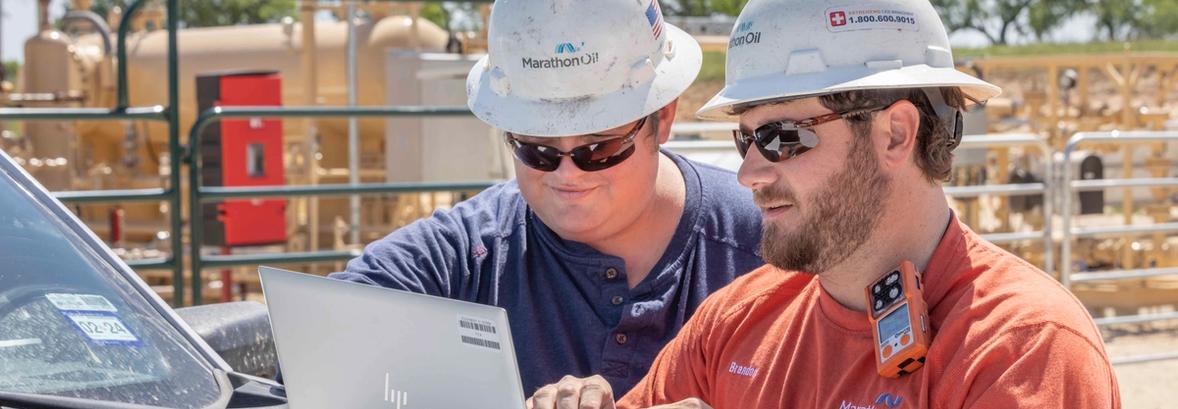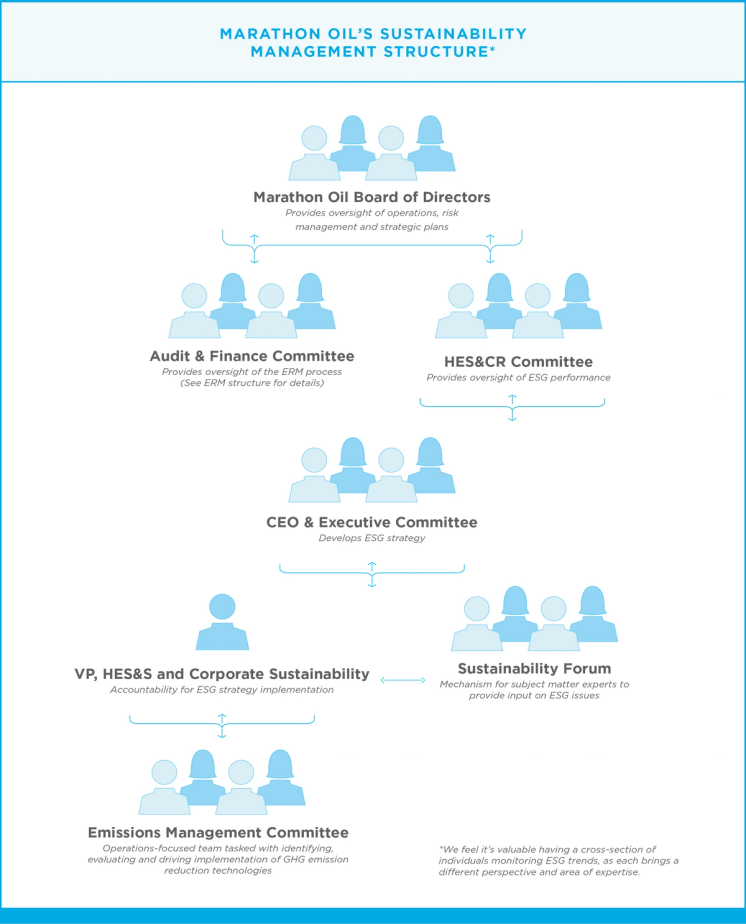

Sustainability Management
Our board of directors provides oversight of our operations, risk management efforts and strategic plans. The board’s Health, Environmental, Safety and Corporate Responsibility (HES&CR) Committee assists the full board and plays a vital oversight role in our sustainability efforts. It identifies, evaluates and monitors trends, opportunities, issues, practices and concerns related to climate change; health, environment, safety and security (HES&S); public policy; legislation; regulations; political, charitable and educational contributions; and other matters.
Our vice president of HES&S and Corporate Sustainability has leadership accountability for driving our corporate sustainability programs and commitments to responsible ESG performance. This individual also leads our cross-functional Sustainability Forum, which provides a mechanism for ongoing dialogue on issues related to ESG risks and mitigations, performance updates against reported goals and targets and updates on reporting and performance trends.
To address our stakeholders’ critical needs, we look beyond our office walls and operational facilities and consider the broader effects of our business decisions, actions and operations. Please see our Stakeholder Map for examples.

HES&S Policies, Standards, Practices and Audits
Mandatory health, environment and safety (HES) policies, standards and procedures drive consistency, communicate expectations and set performance requirements across Marathon Oil. Many of these policies are mentioned in greater detail throughout this report. We update our standards to reflect changes in laws and regulations, incorporate recommendations arising from audits and incident investigations and share lessons learned with employees, contractors and suppliers to raise awareness and drive continuous improvement.
The Responsible Operations Management System (ROMS) has an Audit and Improvement element that promotes adherence to our standards and regulatory requirements that focus on:
- Tier I: Checks of physical conditions and procedural tasks.
- Tier II: Risk-based audits to monitor management system compliance.
- Tier III: Management system audits to determine compliance and effectiveness of management system expectations.
Business units develop plans to address audit findings, track the plans through completion of corrective actions and share lessons learned. Key audit findings and trends are communicated to HES&S leadership and executive management, who then set priorities to seek solutions for gaps or issues that are identified.
How are we doing?
Your opinion matters. Please take a moment to let us know how useful you find the content on this page.
If you’d like to give us your feedback on the entire report, please fill out the complete survey for the 2022 report.



















